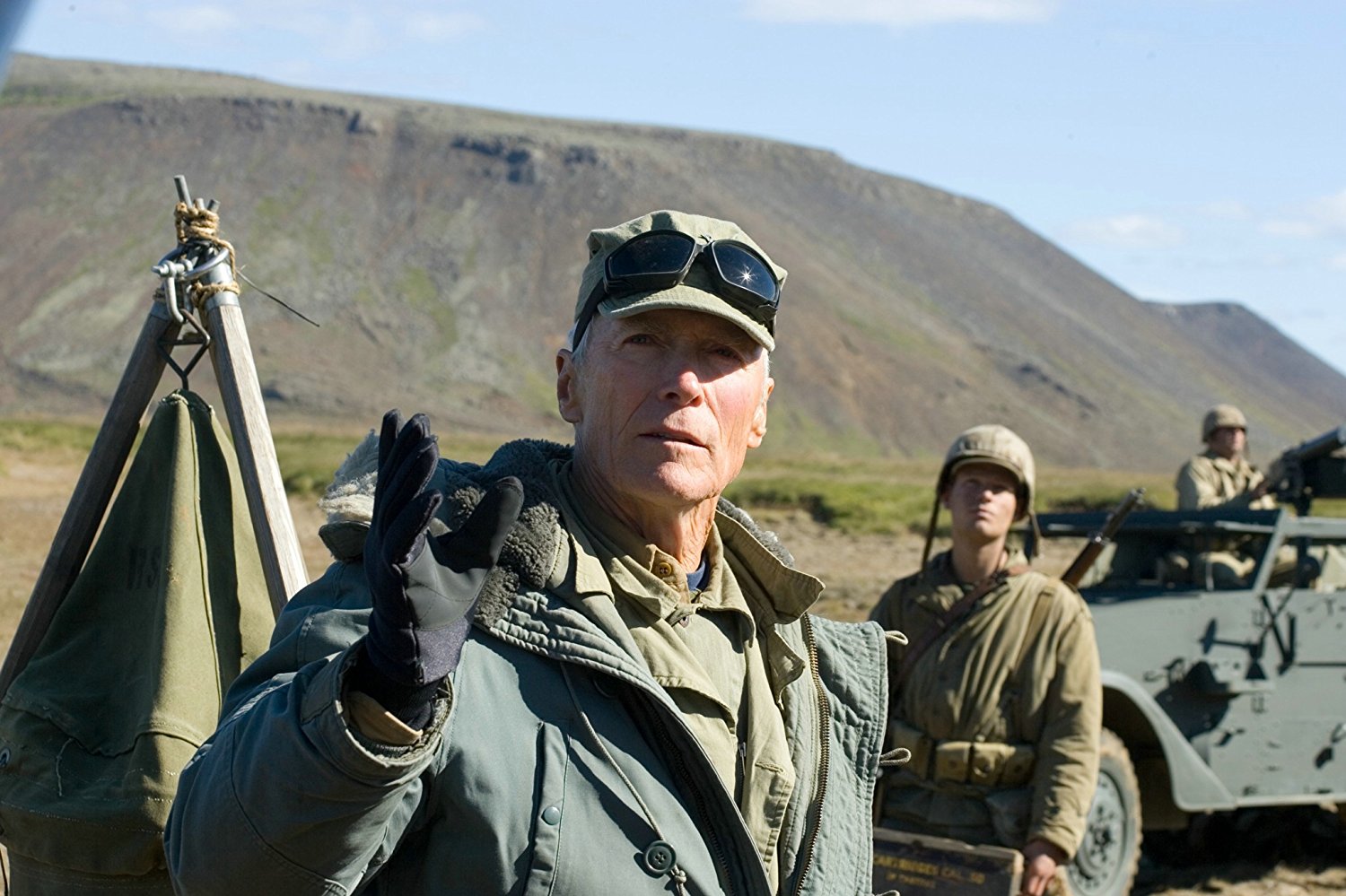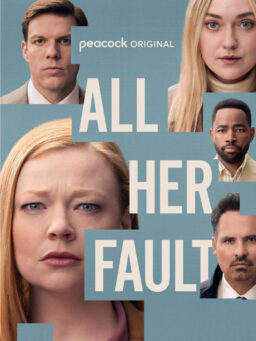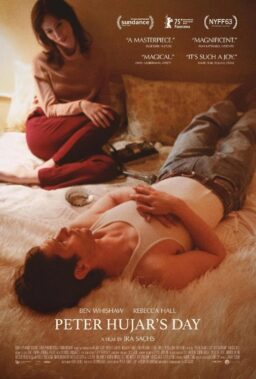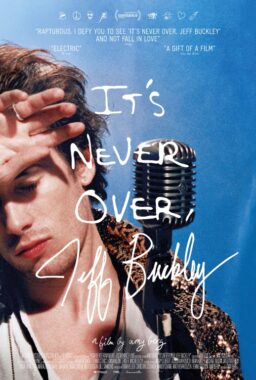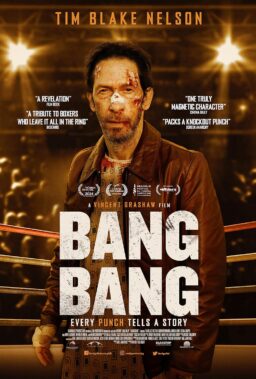“Chocolate or strawberry, sir?” a waiter asks as he lowers a plate of ice cream before the soldier.
“Strawberry,” the soldier answers. The waiter pours a thick syrup on the little mound of ice cream molded in the shape of six American marines lifting a flag. Just a few weeks earlier this same soldier, Corporal Ira Hayes, had been among those sculpted marines as they planted the American flag on top of Mount Suribachi at the height of the Battle of Iwo Jima—an event re-created in Clint Eastwood’s historical drama “Flags of Our Fathers“ (2006). A candid photograph of the flag-raising taken by Joe Rosenthal would become a defining image of the war, and a boon for American propaganda. With the battle won, Ira and his fellow flag-raisers were shipped back to the States to participate in a bond drive. Now, sitting in a fancy dining room thousands of miles from the rest of his unit, Ira watches as a slow waterfall of red bloodies the ice cream men, three of whom were killed in action mere days after the picture was taken. Sergeant Mike Strank was blown to bits by a mortar; Sergeant Hank Hansen shot in the chest; and young Harlon Block blasted to pieces, surviving just long enough to stare into the face of a medic and whimper that he’d been killed. And now their likenesses were covered in chocolate and strawberry and eaten by civilians in suits and ties, laughing and dancing to the sound of “Any Bonds Today?”
The strawberry syrup scene was a rare moment of heavy-handed symbolism from a director who until then had largely abandoned the allegorical flourishes of his earlier Westerns in favor of unfussy, to-the-point genre films and dramas. But “Flags of Our Fathers” was an unusual film for Eastwood no matter how you looked at it. Emboldened by his recent Oscar-winning success with “Million Dollar Baby” (2004), Eastwood helmed a $100+ million diptych on the Battle of Iwo Jima, told from the perspective of American and Japanese soldiers. “Flags of Our Fathers”‘s Japanese counterpart, “Letters from Iwo Jima“ (2006), claimed the most critical acclaim and box office success, but it was “Flags of Our Fathers” that pointed the way for Eastwood’s future career. It was here that we saw the emergence of a new introspection in Eastwood’s work coupled with an obsession with interrogating America’s need for heroes. And although we see these ideas reflected in “Gran Torino” (2008), Eastwood’s film about a Korean War hero who sacrifices his life to save a Korean immigrant family from gang members, it’s in real-life historical dramas “American Sniper“ (2014) and “Sully“ (2016) that we see these themes first defined in “Flags of Our Fathers” most clearly examined.

The recent release of “The 15:17 to Paris,” a retelling of the thwarting of the 2015 Thalys train attack by American servicemen, continues Eastwood’s recent run of modern historical dramas exploring such accidental heroes. Yet it’s inexplicable unwillingness to chart the psychological aftermath of the train attack makes it an odd exception. It’s in these three movies—”Flags of Our Fathers,” “American Sniper,” and “Sully”—that we get the clearest summation of Eastwood’s preoccupation with heroism and fame. Crucially, Eastwood seems to suggest that it’s not their service or action in the line of duty that creates trauma, but the public proclamation of their heroism as something exceptional or extraordinary that psychologically scars them. What then does this say about Eastwood himself, a bit part player catapulted to superstardom in the 1960s for preforming the same kind of stoic, hyper-masculine roles he would direct in these films?
Based on the autobiography of Chris Kyle, the Navy SEAL sniper who became the deadliest marksman in U.S. military history over the course of four tours in Iraq, “American Sniper” portrays its titular character (played by Bradley Cooper) as a directionless nobody who gallantly enlists in the military in the wake of the 1998 U.S. embassy bombings. He has no illusions about the vicious nature of his job: he must kill. He must kill often. He must kill women and children and anybody else who might threaten his fellow soldiers. For him, it’s simply a job that needs doing. The problem is he becomes too good at it. As his kill count nears 200, he has a bounty placed on his head by Iraqi insurgents who nickname him the “Devil of Ramadi.” After being honorably discharged, he finds himself adrift in a country that knows him only as a soldier and killer and isolated from a wife and children he barely knows anymore. He finally finds peace by counseling other disabled veterans before being murdered by another soldier tormented with post-traumatic stress disorder (PTSD). A grateful nation sends him off with a 200-mile funeral cortège and a memorial service at Cowboys Stadium in Arlington, Texas.

Though a smash hit with audiences, “American Sniper” was coolly received by many critics who blasted it as a work of tone-deaf gung-ho nationalism, decrying the facelessness of Kyle’s targets and the whitewashing of the real man whose life story the film was based on. Eastwood’s next film “Sully” was less divisive. It wasn’t about a soldier, a barrel-chested patriot, or a traditional action hero; it centered on a soft-spoken pilot named Chesley “Sully” Sullenberger (Tom Hanks), who managed an emergency landing of US Airways Flight 1549 in the Hudson River on January 2009. Known as the “Miracle on the Hudson,” Sully and his co-pilot Jeffrey Skiles (Aaron Eckhart) ditched their plane in the Hudson after hitting a flock of Canadian geese and losing all engine power. Their actions saved all 155 people aboard the plane, an unprecedented achievement in aviation history. Sully became on overnight media icon, making the rounds on late night talk shows and accepting an invitation to Barack Obama’s first inauguration. Eastwood’s film focuses on a fictionalized retelling of the National Transportation Safety Board’s (NTSB) investigations of the landing and whether or not Sully and Skiles made the right decision to ditch the plane in the river instead of trying for a nearby airport. As the belligerent panel questions his judgement and skills as a pilot, Sully finds himself torn between a public that sees him as a hero and an organization that sees him as a fraud.
How do we reconcile these characters? The shell-shocked marines of “Flags of Our Fathers”; the honor-bound sniper; the disillusioned pilot? First, one must remember that these men—though based on historical figures—were heavily altered by Eastwood. As alluded to above, “American Sniper” omits the writing and publication of the autobiography upon which the film is based as well as accusations that Kyle embellished his military record and medal count and falsely claimed he assaulted former Minnesota Governor Jesse Ventura, the latter of which led to a lawsuit where his widow was ordered to pay Ventura $1.8 million in damages. Likewise, upon “Sully”‘s release the film was met with criticism for allegedly rewriting history to make the NTSB seem more antagonistic than in real life, turning them into blanket villains bent on ruining Sully’s reputation and ending his piloting career. But ultimately these changes are tangential to Eastwood’s overall intention of interrogating heroism. Kyle may have misrepresented his record. He may have even outright lied. But it does little to affect his struggles with PTSD and reacclimation to civilian life. One could even argue that the combative NTSB in “Sully” metaphorically represented Sully’s own internal struggles with potential imposter syndrome and survivor’s guilt. It’s the trauma itself that matters, particularly in how it gestates when confronted with a hero-hungry press and public.
To this end we must ask what, for Eastwood, made these men heroes. One of the first ways is by recognizing a central aspect of their heroism, that of implicit professionalism in the face of danger. Much like the protagonists of Howard Hawks and John Ford, Eastwood’s characters have no inherent desire for heroism or attention. They aren’t champions ordained by Olympian gods; they’re specialists who stumble into jobs beyond their pay grade. Take Sully’s crash landing. At no point does he raise his voice or noticeably panic. After losing power to the engines, he calmly tells Skiles to begin emergency landing protocol, briskly informs the passengers to brace for impact, and composedly tells the control tower that they’re going down. Afterwards Sully confesses to Skiles “I don’t feel like a hero. I was just a man doing his job.” This sentiment is echoed again at the end of the film after Sully and Skiles are vindicated in the eyes of the NTSB following the discovery of the plane’s black box. “We did our job,” Sully smiles. “We did our job,” answers Skiles.

Even in “The 15:17 to Paris,” an outlier among these films in its explicit framing of its protagonists as unexpected heroes untouched by survivor’s guilt or PTSD, the Americans onboard the train are only able to stop the shooter thanks to the skills they mastered while in the armed services, not through simple empty-headed bravado: one subdues him with a martial arts hold he learned in basic and provides field first aid to a gunshot victim; the other takes apart the assailant’s rifle with his weapons training so it can’t be used again. So while “The 15:17 to Paris” is otherwise atypical of the other films mentioned here, its emphasis on preparedness and professionalism is similarly of paramount importance.
Like Sully, the military men in “Flags of Our Fathers” and “American Sniper” see themselves less as crusaders for democracy and the American way of life as men trying to keep each other alive. Following a series of guilt-ridden alcohol benders, Corporal Ira is sent back from the States to the front lines of the Pacific. He tells his commanding officer “[I] can’t take them calling me a hero. All I did was try not to get shot.” Chris Kyle takes the same approach in justifying the carnage he leaves in his wake: every dead insurgent, he explains, is a rescued American.
From this perspective, the trauma faced by Eastwood’s characters take on a new context: their unwanted fame becomes a source of said trauma, not just an external exacerbation of it. Corporal Ira doesn’t descend into self-destructive alcoholism just because he saw so many friends butchered; there’s also a deep self-loathing born from survivor’s guilt worsened by his overnight celebrity. Chris Kyle’s notoriety as the “Devil of Ramadi” sometimes makes the men under his protection more threatened due to bounty hunters and enemy snipers seeking him out, furthering the endless cycle of carnage. Sully writhes in discomfort at the thought of appearing on “Rachael Ray” and “Late Night with David Letterman”—why won’t the world just leave him alone and let him get back to his work?
But America remains rapacious for celebrity, particularly in times of tragedy and uncertainty. The protagonists of “Flags of Our Fathers,” “American Sniper” and “Sully” all arise in such times of crisis: World War II, the Iraq War, the 2008 financial meltdown. They give hope in their own ways for a desperate public, but at the price of their own mental well-being and stability.
In the ’60s and ’70s, Clint Eastwood came to prominence as one of the screen’s great cowboys as Blondie, the “Man with No Name,” in Sergio Leone’s “Fistful of Dollars” trilogy. From there, he achieved pop culture ubiquity through a string of roles embodying the kind of tough, no-nonsense masculinity America had so long mythologized, particularly Inspector “Dirty” Harry Callahan, a grizzled San Francisco cop unafraid to abandon due process in the name of justice. In many ways, the characters of these recent movies seem like updates of this archetype—Sully even evokes Callahan’s open contempt for red-tape and pencil-pushing bureaucrats like the members on the NTSB board. Chris Kyle could stand alongside any number of Eastwood’s grizzled antiheroes unable to escape violent pasts, whether they be Josey Wales running from a lost war he can’t stop fighting, William Munny and his blood-soaked bandit days, or even The Stranger and The Preacher from “High Plains Drifter” (1973) and “Pale Rider” (1985), respectively, two murdered men whose spirits return to life to seek vengeance and justice against those who wronged them. Even Corporal Ira Hayes and the other surviving flag-raisers could relate, if not to Eastwood’s characters, then to Eastwood’s personal experiences with narrowly surviving his own military service when he almost died in a stateside dive bomber crash during the Korean War.
But these new characters differ from the ones played by Eastwood in one significant respect: none of them can ride into the sunset and disappear from history into anonymity or legend. None of them can inhabit a consequence-free world where rogue cops can kill and maim with impunity and keep low public profiles. These heroes sag under the burden of an information age where one’s actions are inescapable. Even the pre-internet heroics of “Flags of Our Fathers” follow its subjects around, thanks to the mass production of their likenesses and the nascence of a media cycle incomprehensible by Old West standards. Perhaps Eastwood isn’t just interrogating heroism, he’s interrogating himself. Maybe Blondie and Callahan didn’t escape their exploits so cleanly. Maybe with these recent films he’s finally giving the little pieces of these characters he carries around with him the emotional closure they—and himself—have so long needed. Maybe he’s finally giving his audiences the comeuppance they deserve for treating such damaged, flawed men so much like ice cream.
